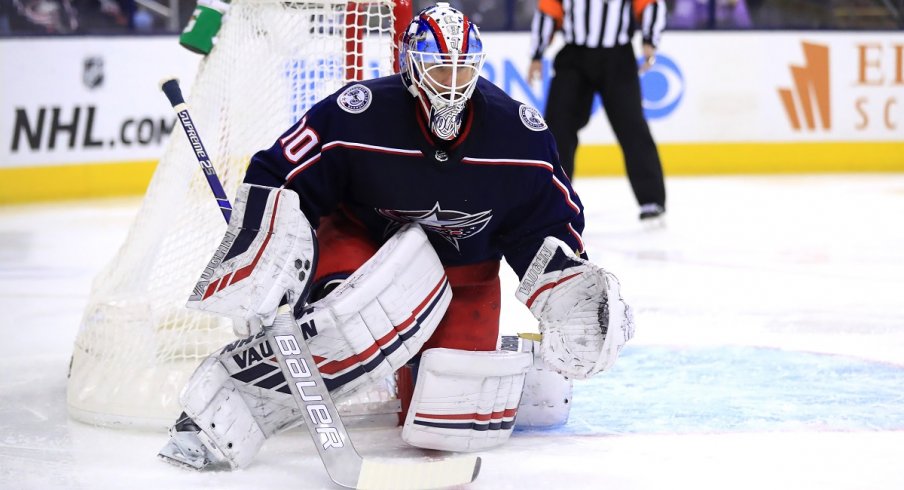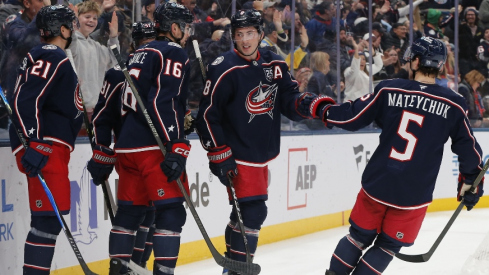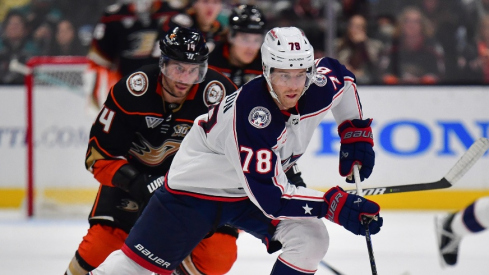In a salary cap world, every NHL team is tasked with efficiently allocating funds to create the best possible roster.
There's no official "how-to-build-an-NHL-roster" handbook on the market, but teams are (finally) wisening up to handing out lucrative contracts to aging players. Instead, teams are paying their stars like, well, stars, and utilizing underpaid players on entry-level contracts. And as the St. Louis Blues just proved, it can be done on the cheap -especially in goal.
I've argued for over a year that moving on from Sergei Bobrovsky would be the right thing to do, no matter how painful. Spending that much on an aging asset is simply bad business. And it doesn't really matter whether you agree or not, because he's gone.
Ushering in a new era for the Blue Jackets are four-year veteran Joonas Korpisalo and Elvis Merzlikins, who will make - between the two of them - $2,024,125 in the upcoming season.
With a salary cap upper limit of $81.5M, that means the Blue Jackets are spending just 2.5% of the overall salary cap on goalies. For comparison, nine teams are spending 10% or more of the cap on their goalies. Leading the way is the Montreal Canadiens. With Carey Price ($10.5M) and Keith Kinkaid (remember him) earning $1.75M, the Habs are spending $12.25M (15%) on two goalies on the wrong side of 30. Good luck to them.
The Chicago Blackhawks come in at second and are the only team in the league that is paying two different goalies $5M or more, with Corey Crawford ($6) and Robin Lehner ($5M) totaling $11M on their books in 2019-20. Unsurprisingly, Florida is third, which is noteworthy because backup Samuel Montembeault is only making $708k this season (Bobrovsky will earn $10M).
There isn't an obvious correlation between spending big on goalies and (playoff) success. The Ottawa Senators come in at 4th, and as great as Henrik Lundqvist has been for the New York Rangers (6th) for the past decade, his $8.5M AAV hasn't yielded a Stanley Cup. In fact, aside from Crawford, none of the goalies mentioned yet in this article have won a championship.
Over the past five years, three of the five Stanley Cup champions have won with their starting goalie making a staggeringly low wage. The Pittsburgh Penguins won the Stanley Cup twice with Matt Murray's $628k cap hit and the St. Louis Blues won with Jordan Binnington and his $650k cap hit. When the Blackhawks won the Stanley Cup in 2015, Crawford was making $6M. And in 2017-18, Braden Holtby was making $6.1M for the Washington Capitals.
The point is, paying for a good (and age-appropriate) goalie is fine. But if we've learned anything from recent Stanley Cup winners, it's that a team can be successful by allocating the majority of their salary structure to skill players and then fortifying the roster with a young and talented goalie.
It's obviously too early to say how this plan will turn out, and it would shock exactly nobody if both Korpisalo and Merzlikins fail to perform to the same (or even ballpark) level of Bobrovsky (especially in year one), who is the only current goaltender to have won the Vezina Trophy twice. Even still, it's fantastic asset management by the Blue Jackets.
We've known for some time now that paying a premium for 'top' goalies does not pay in championships. And while there may be some short-term pain in Columbus, it's for the best that the Blue Jackets will enter the season with the flexibility to re-shape their team in the coming years and are not burdened by an aging goalie.
All contract/salary figures courtesy of the incomparable CapFriendly. To view salary figures by position, click the "Positional Breakdown" tab.


